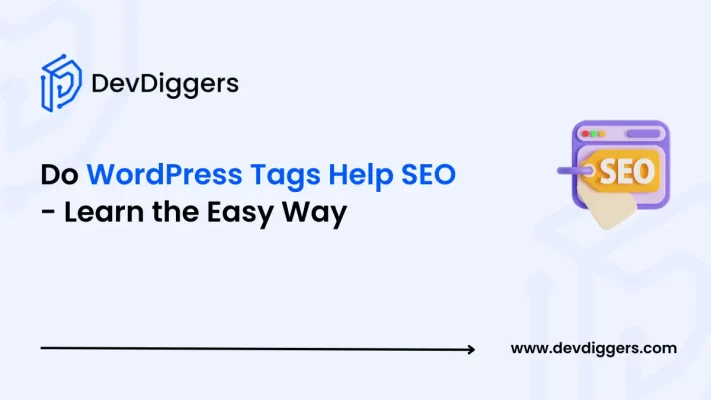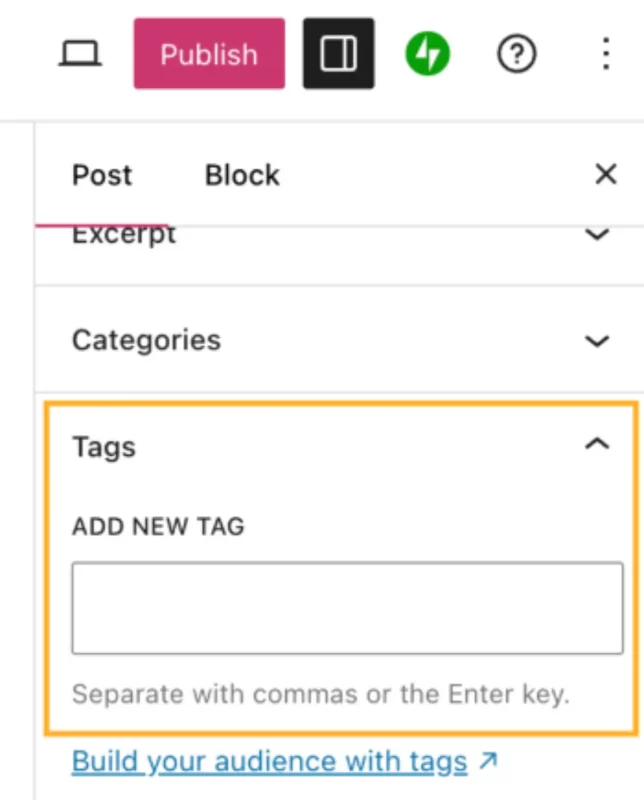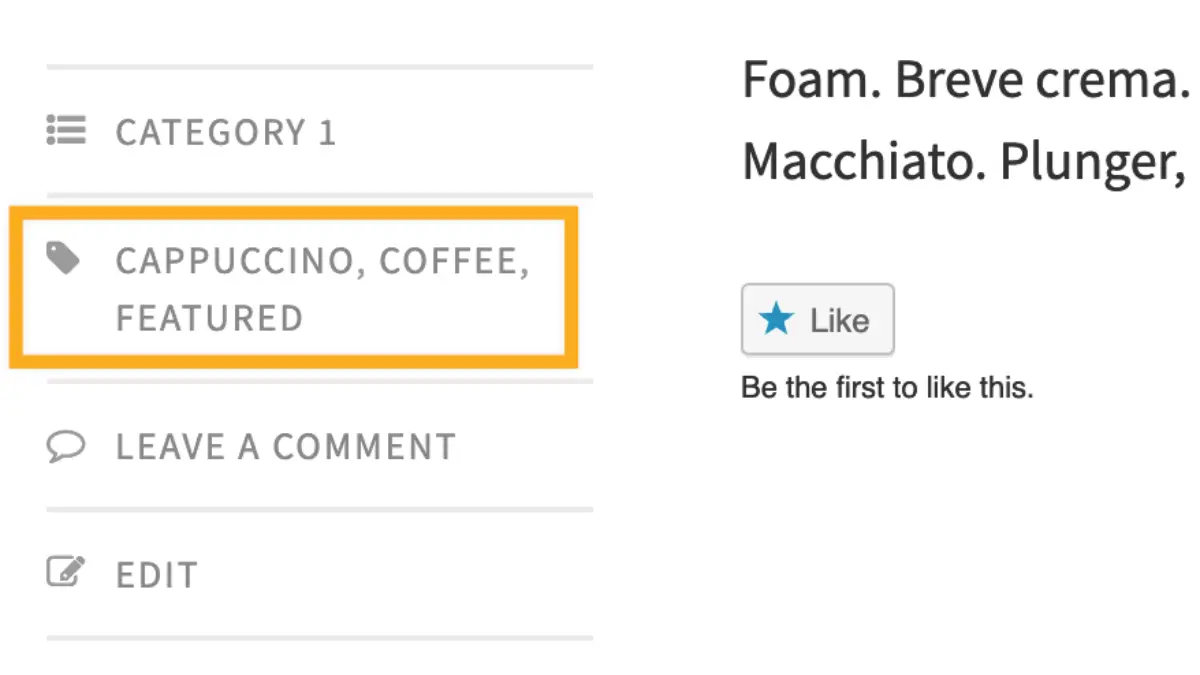- What do WordPress Tags Mean?
- SEO Fundamentals: How Search Engines Work
- The Use of Tags in SEO
- Do WordPress Tags Help SEO?
- Common WordPress Tag Errors
- Best Practices for Using WordPress Tags Effectively
- Conclusion
- Frequently Asked Questions (FAQs)
- Q1. What are WordPress tags, and how do they benefit the site's SEO?
- Q2. Do WordPress tags directly influence your search engine rankings?
- Q3. What common mistakes should you avoid when using WordPress tags?
- Q4. How to optimize the WordPress tag pages for better SEO performance?
- Q5. In what ways do WordPress tags improve user experience and internal linking?
Do WordPress Tags Help SEO?

When you are creating a website using WordPress, you might have thought, as a site owner, about the role the tags play on the overall Search Engine Optimization (SEO) strategy for your site. Here in this blog, you will get all your answers to “Do WordPress tags help SEO?”.
With hundreds of guides as well as debates available online, it might be very challenging for you to come up with a conclusion on whether the WordPress tags are an asset, a liability, or simply another tool that just helps to organize the content of your site.
Through this guide, we will also look over how WordPress tags interact with SEO, cover common challenges that you might face, and share some of the best practices that help you use tags effectively without complicating your website.
What do WordPress Tags Mean?

WordPress tags are generally some keywords or phrases that you apply to your posts to combine the related content. They are a way of explaining certain particular details of a post that might not be covered by broader categories.
Although categories are intended to organize the posts in ranking order, tags enable you to point out different topics of a given post.
For example, let us suppose you write cooking blogs; you must have a category such as “Recipes”, and within it, you might have sub-categories like “vegetarian”, “quick meal”, “desserts”, or even “holiday treats”.
These tags become beneficial to the people visiting your website and even for the search engines because they clearly show the content’s finer divisions, which provides a better structure for your website.
SEO Fundamentals: How Search Engines Work
Before jumping straight into the particular functions of WordPress tags, it is essential to know certain things to understand the basic SEO principles. SEO, or Search Engine Optimization, is about optimizing different parts of your site so that search engines can crawl, index, and rank your content with ease.
The primary components of SEO include:
- Keyword Relevance: You need to ensure that your content is relevant to the search terms people are searching for.
- Site Structure: An obvious ranking or division of the content, along with the internal linking structure, makes it easy for search engines to find their way around your site.
- Content Quality: Your site must be useful enough to address your users’ queries.
- User Experience (UX): Your site should have a simple navigation system, quick page loading, and mobile friendliness to maintain a good UX for your site.
- Backlinks and Authority: The links that your site contains must be quality inbound to ensure the search engines that your content is valuable and trusted.
The Use of Tags in SEO

WordPress tags serve a twofold purpose: they assist both your users and search engines in knowing and navigating your site. Let us discuss the role tags play in the larger SEO universe.
1. Site Organization and Navigation
One of the main advantages of using tags is that they help in organizing the related content of your site under one group. When a user clicks on a tag, they are directed to a tag archive page with all the posts tagged with it.
Not only does this organize your content, but it also invites more site visitors to view more related posts. More time on site and decreased bounce rates can indirectly inform the search engines that your site is serving value and is trusted, which will further help boost your SEO performance.
2. Keyword Association and Relevance
Every tag is a keyword or a brief phrase that indicates a primary subject discussed in your entire content of the site. If you use these tags carefully, they can help emphasize the niche subjects that you wish to rank for.
For instance, if your blog article discusses “WordPress SEO best practices” and you tag it with “WordPress SEO” or “SEO tips,” you are emphasizing the relevance of the keyword relevance to the search engines.
The SEOPress content points out that optimized tags can be used as extra landing pages for keywords that add more context to users and search engines.
3. Facilitating Internal Linking
Tags automatically build a system of internal linking through the tag archive pages. This also means that a user who reads one post can easily access other posts with similar issues by clicking on the tag.
Good internal linking has the effect of spreading links equally throughout your entire site and helps the search engines in finding new content. When search engines notice a good internal linking system, it can have a good impact on your site’s crawl efficiency and indexation, which means improved SEO and higher ranking among other sites.
4. Addressing Duplicate Content Concerns
Often the site owners are concerned about whether tag pages create duplicate content issues over their site. Duplicate content might occur if multiple pages on your site are nearly identical in content, which further confuses search engines.
However, when used properly, tags rarely pose this risk. The key is to use tags selectively and ensure that each tag page provides a different value proposition. This helps to prevent so many duplications of tag pages with duplicate content on your site.
Do WordPress Tags Help SEO?

You cannot directly answer by saying “yes” or “no” to whether tags have any effect on SEO at all. Instead, the effect of tags defines how they are being used and handled.
Indirect Benefits
While search engines such as Google do not explicitly mention tags as a ranking factor, their indirect advantages are significant. For example, by helping in better navigation of the site, tags eliminate the bounce rates and increase the length of the sessions.
Both these elements are positive factors in SEO. Also, an organized site can enhance user experience, which is a key signal for search engines.
Potential Pitfalls When Overused
The downside is that tag abuse can damage your SEO. Tag abuse occurs when you overuse tags or apply very similar tags to multiple posts, which results in watered-down page authority and even duplicate content issues.
For instance, if you create thin tag pages or apply multiple similar tags to one post, search engines may view them as low-value pages. In these instances, rather than helping, these pages can build up a messy site hierarchy that makes it difficult for search engines to crawl your site optimally.
Common WordPress Tag Errors
Although tags may be of help, there are some common errors that many website owners fall into. If you know the errors, then you can do away with them and make your tags help with your SEO instead.
1. Over-Tagging
Over-tagging is when you add too many tags to a post. As tempting as it might be to use all possible relevant keywords, it can make it confusing. There are just too many tags for the post to be identified.
The tag archive pages end up being practically indistinguishable from one another. Instead, select a few different tags that reflect the major subjects of the post.
2. Redundancy and Duplicate Tags
Another error occurs when extremely similar tags are used. An example would be using both “WordPress SEO” and “WP SEO” across various posts, but it will leave search engines in doubt of which page it should rank for the keyword.
Combining tags having similar meanings into a single standard tag preserves clarity and concentration.
3. Creating Thin Tag Pages
Tag pages must be helpful destination pages for users. But if one creates a tag page and it shows few posts or no other context, it can be termed as “thin” content by search engines.
This content does not add much value, and in the worst case, the search engines may decide not to index such pages at all. To eliminate this, you can try adding short introductions or summaries to your tag pages describing the context of the posts listed.
4. Forgetting SEO Settings
Most SEO plugins and tools provide settings to control tag pages. Forgetting these settings can lead to tag pages competing with your main content for search engine rankings.
For instance, some plugins enable you to set your tag pages to “index.” This implies that search engines won’t add them to the index. If your tags aren’t providing much value, it would be a good idea to keep them from being indexed so that no harm can be done to your SEO.
Best Practices for Using WordPress Tags Effectively

To ensure WordPress tags help your SEO instead of hurting it, follow these best practices.
1. Use Tags Sparingly and Strategically
It’s better to keep tags per post to a minimum. Try for a few, usually between 3 and 5, who are representative of the main subjects of the content.
This narrow scope allows every tag page to have a definite reason for being and for the tags themselves to be involved in a more solid internal linking structure.
2. Be Consistent with Tag Names
Standardize your tag names throughout your site. Choose a format such as “WordPress SEO” instead of combining “WordPress SEO” and “WP SEO” and use it evenly.
Not only does this help the search engines better understand your site, but it also makes it simpler for your users to look for the relevant content.
3. Optimize Tag Pages
Wherever possible, make your tag pages as well-optimized as you would any other page on your site. Create a brief introduction or overview at the top of every tag page that tells users what type of posts they will be reading.
This added context can go a long way toward making tag pages not be viewed as thin content. In addition, make sure your tag pages are well-designed, have good navigation, and include appropriate internal links.
4. Monitor and Revise Your Tag Strategy
As your website grows, it’s important to periodically review your tags. Look for tags that are rarely used or that create duplicate content issues, and consider merging or removing them.
Tools such as Google Analytics and your SEO plugin can provide insights into how well each tag page is performing in terms of user engagement and search visibility.
5. Leverage SEO Plugins and Tools
Some SEO WordPress plugins have a feature that manages tag pages. For instance, plugins may automatically generate meta descriptions for tag pages or let you include them as “noindex” if they are low-value.
Using these tools for your site will save you time and allow your tags to harmonize with the rest of your SEO.
6. Do Not Keyword Stuff
Keyword stuffing isn’t limited to post content but can also occur with tags. Select tags that naturally label your content instead of trying to stuff as many keywords as possible into them.
Quality is better than quantity. Using natural, descriptive tags will give a superior user experience and prevent triggering any spam filters in search engines that might be used.
7. Test Your Tag Pages
Lastly, don’t hesitate to experiment with different methods. Observe how users behave on your tag pages, and modify your approach according to real-world results.
If some tags are attracting traffic and keeping people interested, they’re probably effective. If, on the other hand, a tag page is experiencing high bounce rates or very little engagement, it may be time to rethink the content or the tag.
Conclusion
WordPress tags do have the power to assist with SEO—if properly utilized. They are an easy method of structuring content, emphasizing important themes, and creating internal linking opportunities.
Strategically applied, tags improve the user experience, increase keyword relevance, and even function as landing pages for specialized themes. But with the advantages come a warning: tags need to be handled properly to prevent traps such as over-tagging, duplication, and thin content.
By maintaining the best practices like using tags carefully, maintaining consistent names, and tag page optimization, you can leverage the potential of WordPress tags as part of your overall SEO strategy.
Keep in mind that although tags are helpful, they must be used in conjunction with a complete SEO strategy that incorporates quality content, a well-structured site, and ongoing performance tracking. Thus, WordPress tags become a resource that helps both users and search engines navigate the abundance of content on your site.
Whether you’re a novice or a seasoned site owner, knowing how to utilize WordPress tags wisely can make a big impact on your SEO results. Keep your strategy simple, track your results, and adapt to your method as your site matures.
With a well-balanced, considerate approach, tags can be an invaluable resource to increase navigation and ultimately drive your site’s success within search engine rankings.
Frequently Asked Questions (FAQs)
Q1. What are WordPress tags, and how do they benefit the site’s SEO?
WordPress tags are short keywords or phrases that group related posts together. They help with the site navigation and help search engines understand your content structure, indirectly improving the site’s SEO.
Q2. Do WordPress tags directly influence your search engine rankings?
Tags do not directly affect rankings but enhance your site’s organization and user engagement, which further improves the SEO.
Q3. What common mistakes should you avoid when using WordPress tags?
You must avoid over-tagging, using redundant or similar tags, and creating thin tag pages that confuse search engines.
Q4. How to optimize the WordPress tag pages for better SEO performance?
Use a limited number of well-chosen tags, around 3 to 5, per post, and make the tag names standard. You can also enhance your tag pages with summaries and adjust the SEO plugin settings to eliminate low-value content issues.
Q5. In what ways do WordPress tags improve user experience and internal linking?
WordPress tags lead your users to archive pages with related posts, which makes it easier to explore your site. This structured internal linking improves navigation, leading to longer visits that improve the SEO.

Sagnika Goswami
Hi, I’m Sagnika Goswami. I am a tech enthusiast with a knack for content writing. Read my blogs for your daily insights.


Leave a Reply